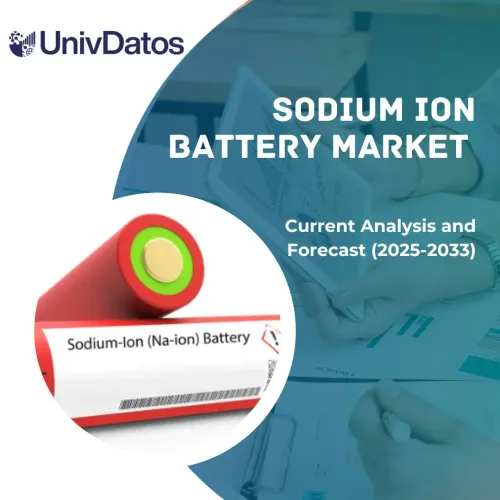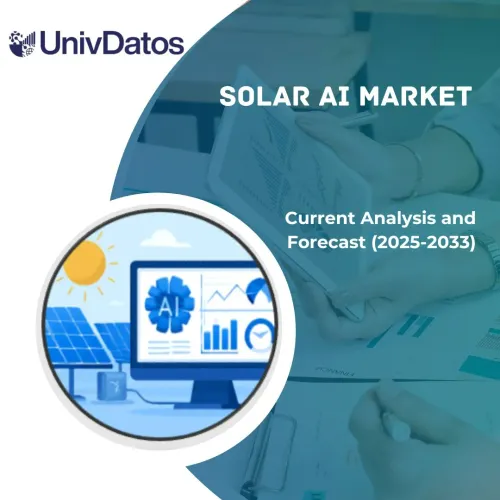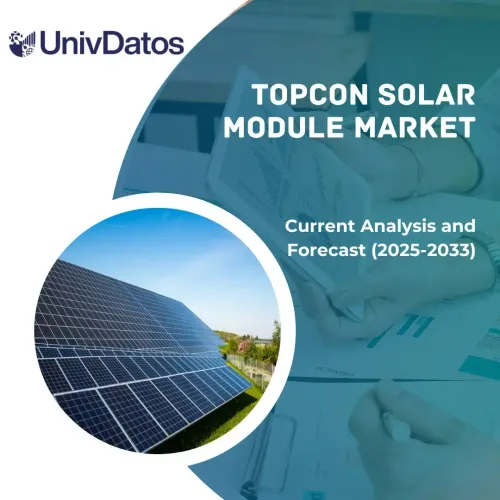- Home
- About Us
- Industry
- Services
- Reading
- Contact Us
Artificial Photosynthesis Market: Current Analysis and Forecast (2021-2027)
Emphasis on Technology (Co2-Electrolysis, Photo-Electron Catalysis, And Others); Application (Hydrocarbons, Hydrogen, And Chemicals); and Region/Country

The Artificial Photosynthesis market demand is increasing at an extensive rate over the years and is expected to witness significant growth during the forecasted period as well. Artificial photosynthesis is a technology in which solar energy is converted with the assistance of catalytic processes and used for producing fuels and valuable products. Production takes place in completely integrated systems such as for example “artificial leaves” or by directly combining photovoltaic and electrolysis systems Artificial photosynthesis replicates the photochemical process of natural photosynthesis. However, it is more dedicated to the production of useful fuels or valuable chemicals such as molecular hydrogen (H2), methane, methanol, etc.
The market is attributed to the factors such as government subsidies and R&D funding driving the market size of artificial photosynthesis. Many biopharmaceutical companies are investing in these startups for increased research on artificial photosynthesis. Research and development activities form the core of the growth of the artificial photosynthesis market.
The global Artificial Photosynthesis market is expected to register a CAGR of more than 13 % throughout 2021-2027. Factors such as the growing need for clean energy around the globe due to the depletion of non-renewable resources may trigger the growth prospects of artificial photosynthesis.
Moreover, the increasing encouragement by government bodies to promote the use of clean energy may also help in boosting the growth prospects of the artificial photosynthesis market. Furthermore, governments across the globe are planning for net-zero emissions coupled with soaring demand of green H2 and eco-friendly liquid fuels are expected to offer lucrative opportunities for the artificial photosynthesis market during the forecast period.
Panasonic Corporation, ENGIE, TOSHIBA CORPORATION, Siemens Energy, FUJITSU, Evonik Industries AG, FUJIFILM Corporation, Toyota Central R&D Labs., Inc, Mitsubishi Chemical Corporation, Weatherford are some of the key players in the market. Several M&As along with partnerships have been undertaken by these players to facilitate customers with hi-tech and innovative products/technologies.
Insights Presented in the Report
“Based on technology, Co2 electrolysis segment accounted for the majority share in the market in 2020”
Based on technology, the artificial photosynthesis market is classified into co2-electrolysis, photo-electron catalysis, and others. The Co2 electrolysis segment caters to extensive market share in the artificial photosynthesis market. In order to establish optimized systems for carbon recycling in the artificial photosynthesis process high-efficiency photovoltaic and CO2 electrolysis are combined together to get high productivity.
“Amongst application, hydrogen segment is expected to witness highest CAGR during the forecast period”
Based on application, the artificial photosynthesis market is segmented into hydrocarbons, hydrogen, and chemicals. The hydrogen segment acquired a considerable market share in the artificial photosynthesis market. It is one of the promising technologies to produce liquid fuels in a sustainable manner and replicate the natural process of photosynthesis, converting sunlight, water, and CO2 into carbohydrates and/or hydrogen with oxygen as a byproduct.
“Asia Pacific to witness significant growth during the forecast period”
Asia Pacific is expected to hold an extensive share in the artificial photosynthesis market and is expected to grow at an influential rate in the forecasted period as well. The Asia Pacific is one of the leading markets that has adopted green technologies to meet the targets set by the governments for reducing greenhouse gas emissions. Furthermore, countries such as Japan and South Korea are increasing their investments in innovative energy & fuel generation technologies, such as fuel cells, carbon recycling, and others. For instance: in 2020, approximately 500 hydrogen-powered fuel cell vehicles were utilized during the Olympics. Japan is also aiming to construct 1,000 hydrogen refueling stations for fuel-cell vehicles across the country by 2030.
Moreover, key developments in Singapore’s hydrogen sector as the island state moves to implement its “Green Plan” and begins to take its first steps in exploring the potential of hydrogen playing a role in its economy going forward which in turn also propels the market size of artificial photosynthesis.
Reasons to buy this report:
- The study includes market sizing and forecasting analysis validated by authenticated key industry experts.
- The report presents a quick review of overall industry performance at one glance.
- The report covers an in-depth analysis of prominent industry peers with a primary focus on key business financials, product portfolios, expansion strategies, and recent developments.
- Detailed examination of drivers, restraints, key trends, and opportunities prevailing in the industry.
- The study comprehensively covers the market across different segments.
- Deep dive regional level analysis of the industry.
Customization Options:
Global Artificial Photosynthesis market can further be customized as per the requirement or any other market segment. Besides this, UMI understands that you may have your own business needs, hence feel free to connect with us to get a report that completely suits your requirements.
Table of Content
Research Methodology for the Global Artificial Photosynthesis Market Analysis (2021-2027)
Analyzing the historical market, estimating the current market, and forecasting the future market of the global artificial photosynthesis market were the three major steps undertaken to create and analyze the adoption of the artificial photosynthesis in major regions globally. Exhaustive secondary research was conducted to collect the historical market numbers and estimate the current market size. Secondly, to validate these insights, numerous findings and assumptions were taken into consideration. Moreover, exhaustive primary interviews were also conducted, with industry experts across the value chain of the global artificial photosynthesis market. Post assumption and validation of market numbers through primary interviews, we employed a top-down/bottom-up approach to forecasting the complete market size. Thereafter, market breakdown and data triangulation methods were adopted to estimate and analyze the market size of segments and sub-segments of the industry pertains to. Detailed methodology is explained below:
Seek More Details About Research Methodology
Analysis of Historical Market Size
Step 1: In-Depth Study of Secondary Sources:
Detail secondary study was conducted to obtain the historical market size of the artificial photosynthesis market through company internal sources such as annual reports & financial statements, performance presentations, press releases, etc., and external sources including journals, news & articles, government publications, competitor publications, sector reports, third-party database, and other credible publications.
Step 2: Market Segmentation:
After obtaining the historical market size of the artificial photosynthesis market, we conducted a detailed secondary analysis to gather historical market insights and share for different segments & sub-segments for major regions. Major segments are included in the report as application and technology. Further country-level analyses were conducted to evaluate the overall adoption of testing models in that region.
Step 3: Factor Analysis:
After acquiring the historical market size of different segments and sub-segments, we conducted a detailed factor analysis to estimate the current market size of the artificial photosynthesis market. Further, we conducted factor analysis using dependent and independent variables such as the growing demand of green H2 and eco-friendly liquid fuels. A thorough analysis was conducted for demand and supply-side scenarios considering top partnerships, mergers and acquisitions, business expansion, and product launches in the Artificial Photosynthesis market sector across the globe.
Current Market Size Estimate & Forecast
Current Market Sizing: Based on actionable insights from the above 3 steps, we arrived at the current market size, key players in the global artificial photosynthesis market, and market shares of the segments. All the required percentage shares split, and market breakdowns were determined using the above-mentioned secondary approach and were verified through primary interviews.
Estimation & Forecasting: For market estimation and forecast, weights were assigned to different factors including drivers & trends, restraints, and opportunities available for the stakeholders. After analyzing these factors, relevant forecasting techniques i.e., the top-down/bottom-up approach were applied to arrive at the market forecast about 2027 for different segments and sub-segments across the major markets globally. The research methodology adopted to estimate the market size encompasses:
- The industry’s market size, in terms of revenue (USD) and the adoption rate of the Artificial Photosynthesis market across the major markets domestically
- All percentage shares, splits, and breakdowns of market segments and sub-segments
- Key players in the global Artificial Photosynthesis market in terms of services offered. Also, the growth strategies adopted by these players to compete in the fast-growing market
Market Size and Share Validation
Primary Research: In-depth interviews were conducted with the Key Opinion Leaders (KOLs) including Top Level Executives (CXO/VPs, Sales Head, Marketing Head, Operational Head, Regional Head, Country Head, etc.) across major regions. Primary research findings were then summarized, and statistical analysis was performed to prove the stated hypothesis. Inputs from primary research were consolidated with secondary findings, hence turning information into actionable insights.
Split of Primary Participants in Different Regions

Market Engineering
The data triangulation technique was employed to complete the overall market estimation and to arrive at precise statistical numbers for each segment and sub-segment of the global artificial photosynthesis market. Data was split into several segments & sub-segments post studying various parameters and trends in the application and technology in the global artificial photosynthesis market.
The main objective of the Global Artificial Photosynthesis Market Study
The current & future market trends of the global Artificial Photosynthesis market were pinpointed in the study. Investors can gain strategic insights to base their discretion for investments on the qualitative and quantitative analysis performed in the study. Current and future market trends determined the overall attractiveness of the market at a regional level, providing a platform for the industrial participant to exploit the untapped market to benefit from a first-mover advantage. Other quantitative goals of the studies include:
- Analyze the current and forecast market size of the artificial photosynthesis market in terms of value (USD). Also, analyze the current and forecast market size of different segments and sub-segments
- Segments in the study include areas of application and technology.
- Define and analysis of the regulatory framework for the artificial photosynthesis market industry.
- Analyze the value chain involved with the presence of various intermediaries, along with analyzing customer and competitor behaviors of the industry.
- Analyze the current and forecast market size of the artificial photosynthesis market for the major region.
- Major countries of regions studied in the report include Asia Pacific, Europe, North America, and the Rest of the world.
- Company profiles of the artificial photosynthesis market and the growth strategies adopted by the market players to sustain in the fast-growing market
- Deep dive regional level analysis of the industry
Related Reports
Customers who bought this item also bought










